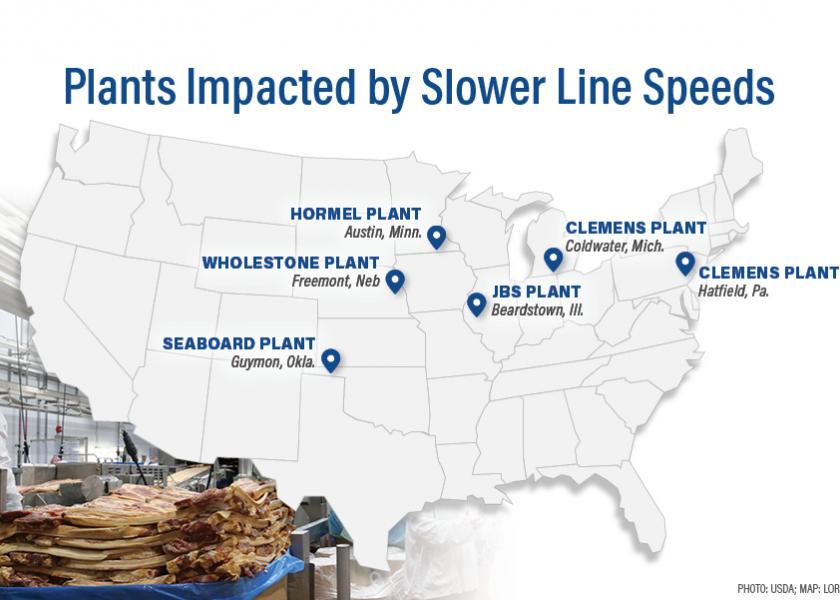The Reality of Slower Line Speeds

As of July 1, line speeds at six plants are running as much as 25% to 30% slower. Three of those plants are in the central Corn Belt. The other three are in eastern Pennsylvania, southern Michigan and the Oklahoma Panhandle where there are not a lot of alternative packers in the area. That means the surplus animals will have to move into the central Corn Belt, which comes with a cost.
AgriTalk host Chip Flory recently caught up with Dermot Hayes, an ag economist at Iowa State University. Hayes spoke with each of the six impacted managers about their contingency plans, some of which do have plans to add Saturday shifts and/or work longer mandatory shifts.
“Even after the shift adjustments the industry is losing about 2.5% of its total capacity,” he says. “That’s not a big issue in July when we’re not near capacity, but next fall that will be a concern for everybody.”
In light of labor issues, and the fact everybody needs to show up for the plant to run properly, adding a mandatory Saturday shift, mandatory overtime or two hours to an eight-hour shift means people are tired.
“I used to work in a packing plant and there are a lot of sharp knives. If worker safety is a concern, then forcing people to work a 10-hour shift is not the best thing to do,” Hayes says. “Three of the plants have said they just don’t have the workers and they don’t want to lose existing workers, so they’re not going to adapt in any way. They’re just going to kill fewer animals.”
Worker safety was at the heart of the slower line speed decision, but since the “pilot program,” which increased line speeds during the Clinton administration, has been in effect, Hayes isn’t aware of any safety issues.
The industry still hopes an appeal will be granted or the impacted plants will get a waiver. “If that doesn’t happen, producers who supply hogs to those plants might lose their contracts this fall under force majeure because the plants will have no choice but to kill fewer animals,” Hayes says.
Hayes’ colleague Lee Schulz has shown there is a direct relationship between capacity utilization and a plant’s willingness or ability to pay higher spot prices.
“When you lose 2.5% national capacity, the whole industry takes a blow because plants have more market power than producers,” he adds.
Listen to the full 11-minute interview with Hayes, who also covers supply/demand dynamics, prices and China, here:







